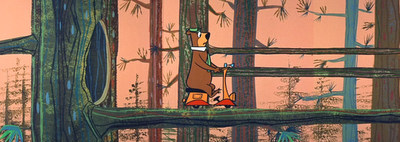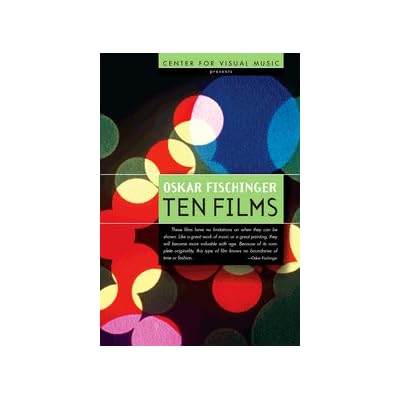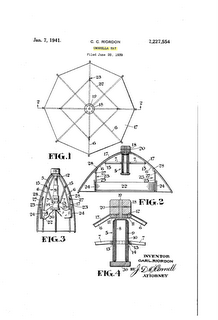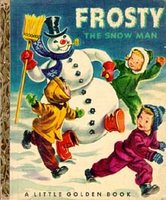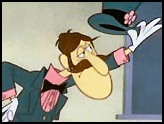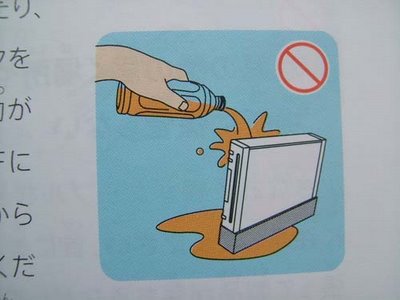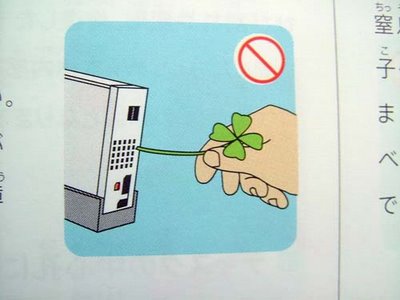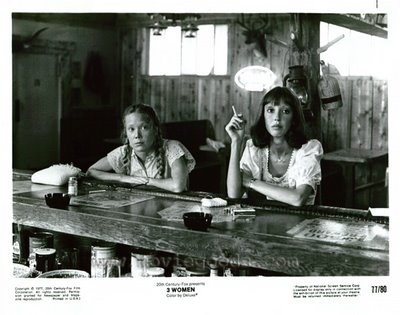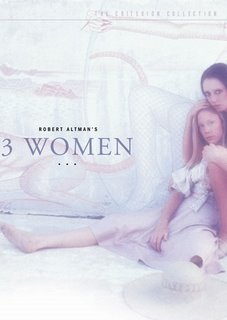I am not lovingly gazing toward an Oriental essence - to me the Orient is a matter of indifference, merely providing a reserve of features whose manipulation - whose invented interplay - allows me to "entertain" the idea of an unheard-of symbolic system, one altogether detached from our own. What can be addressed, in the consideration of the Orient, are not other symbols, another metaphysics, another wisdom (though the latter might appear thoroughly desirable); it is the possibility of a difference, of a mutation, of a revolution in the propriety of symbolic systems.
- Roland Barthes


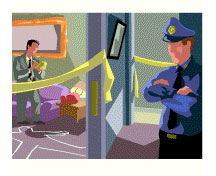 Complete Microsoft Clip-Art Library search results for "murder"
Complete Microsoft Clip-Art Library search results for "murder"The Microsoft Clip Art library (viewable
online for non-Office users) includes six images
tagged with the majority of these keywords:
audio, audio equipment, digital audio player, digital audio players, earphones, entertainment, icons, leisure, listening, MP3, MP3 player, MP3 players, music, technologies. Only one of them is tagged with the term "digital audio player," and it, as well as three more of the six total images in this clustered category in the massive Microsoft Office clip art library, is unmistakably an iPod.

There are obvious discrepancies - the artist saw fit to add an eardrum-endangering volume slide and "Go" and "Stop" buttons for visual effect. But the combination of the click-wheel and the iconic white body and matching earbud headphones are clear indicators of the brand in the early days of the player when Jobs, taking a cue from Henry Ford, offered the iPod in every color, as long as it was white, and when there was no such thing as the Zune, or even any plans for Microsoft to get into the music-player market.
Number of clip-art results for "Santa": 317
Number of clip-art results for "Jesus": 19
Number of clip-art results for "Beatles": 0
Number of clip-art results for "Devil": 36
Number of clip-art results for "Buddha": 9
For "Muhammed/Mohammed/Muhamet": 0
Clip-art makes its own formaldehyde; since materials produced for use as clip-art are thought of as contributions to a stockpile, and I suppose also because most of it is junk on day one, no one ever seems to establish any criteria for excising anything from a clip-art library, and it all sits there forever, waiting to be discovered. I'm frequently tempted to try to date "periods" in Microsoft clip-art by its content, despite the fact that it comes from a multitude of contracted sources who may or may not be swayed by faddish trends in spot illustration or by facts of immediate contemporary relevance which will cause images to date themselves due to their unspoken assumptions.
"Ten Commandments": 19
"Constitution" and "Bill of Rights" (combined total): 3
In the case of the iPod, a wildly successful product release from one of Microsoft's biggest rivals, I would guess that the "digital audio player" was drawn and uploaded in 2001 or 2002, when Apple's players truly had competitor-free iconic status and when conflicts between Microsoft and Apple were at a relative lull, with Microsoft having no direct interest in the music market and iTunes still available only for the Mac platform. No one questioned its continued availability in preparations for the rollout of Office 2003. Will it appear in Office 2007, or will it have been replaced by a clip-art image of the Zune player?
"Contraceptives": 7
Fraction of "contraceptives" results featuring birth control pills: 6/7
Fraction of "contraceptives" results featuring condoms: 1/7

If past behavior is any indication, the unnamed iPod will stay. You don't have to look far to find other examples of clip art that would be retired if they were the product of any other medium. Many of these not only incorporate outdated technologies, like the illustration at right , but also a clear sense of style and even of attitude has been superseded and is no longer of use to anyone aware of the current culture. It is of another time, one we have lost direct contact with but can infer from the historical record. How often do these symbols represent ideas that have also lost their lustre? One axis of clip-art organization is its "Style," and all clip-art images are categorized using numeric codes. Can a
style of clip-art, like a style of painting, itself embody a set of beliefs which can become culturally dated? How does a clip-art artist's view of the world, and their view of their audiences, relate to the true nature of their audiences, and to those who are not in their audiences, that is, to the world at large?
Number of clip-art results for "birth": 119
Number of "birth" images featuring mothers: 14
Number of "birth" images featuring storks: 22
Number of "birth" images featuring a birth (delivery): 1
Percentage of "birth" images suggesting delivery via Cesarean: 0
Percentage of U.S. babies delivered via Cesarean: 30
Percentage of U.S. babies delivered via stork: 0
Of course, PowerPoint - and digital clip-art in general - will say far more about us to future generations, when precise dating becomes less important and a broader interpretation of who we are (were) can be made of the whole corpus of digitally-produced clip-art we have accumulated since the early 1990s. Someone will have the tedious task of digging through the digital detritus of our age's business presentations to try to find a way to report back to us on what it all meant. For now, it's all pure speculation; that is, anything we have to say about the meaning of clip-art may say more about us as individuals than it says about our culture.
Then again, maybe not.












